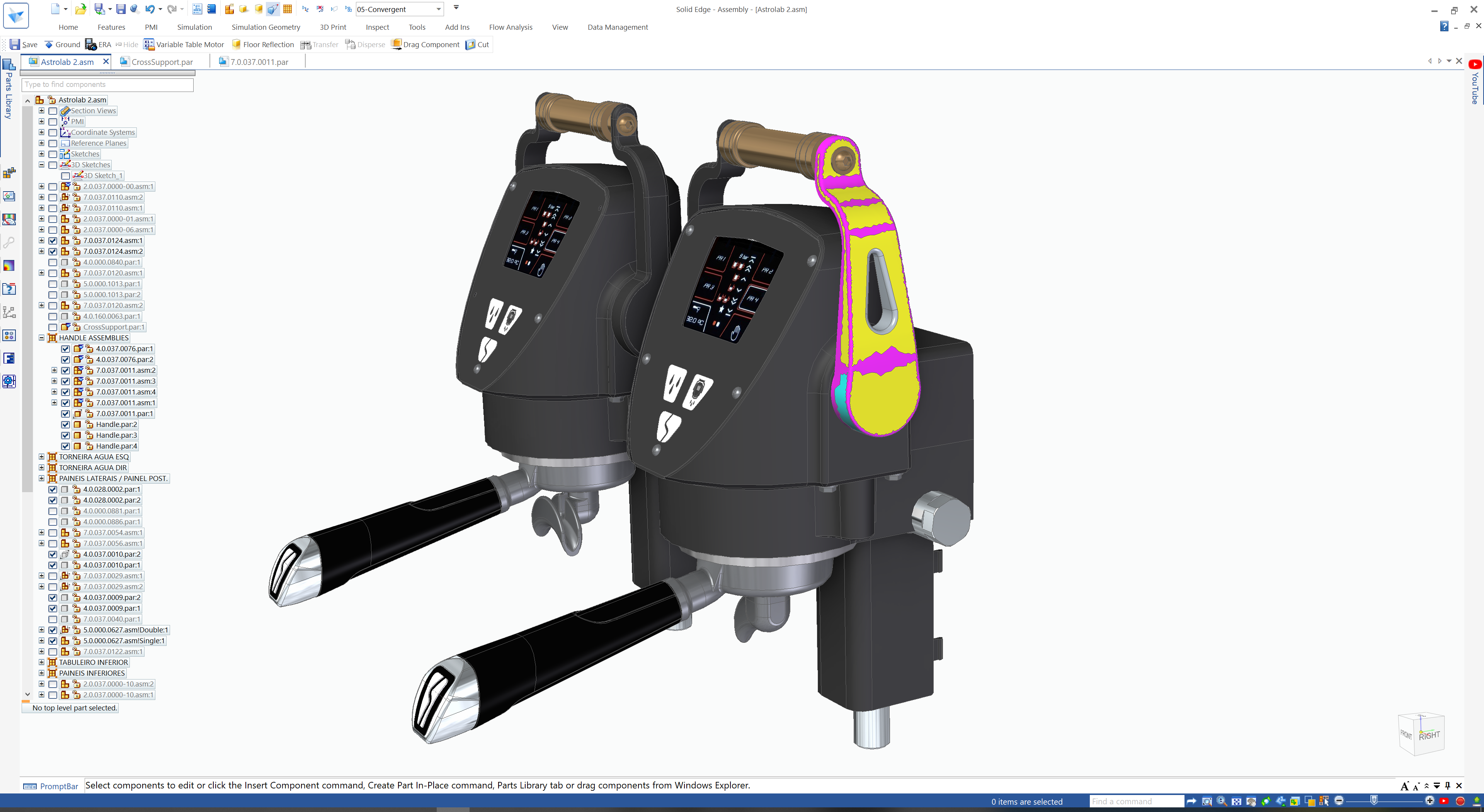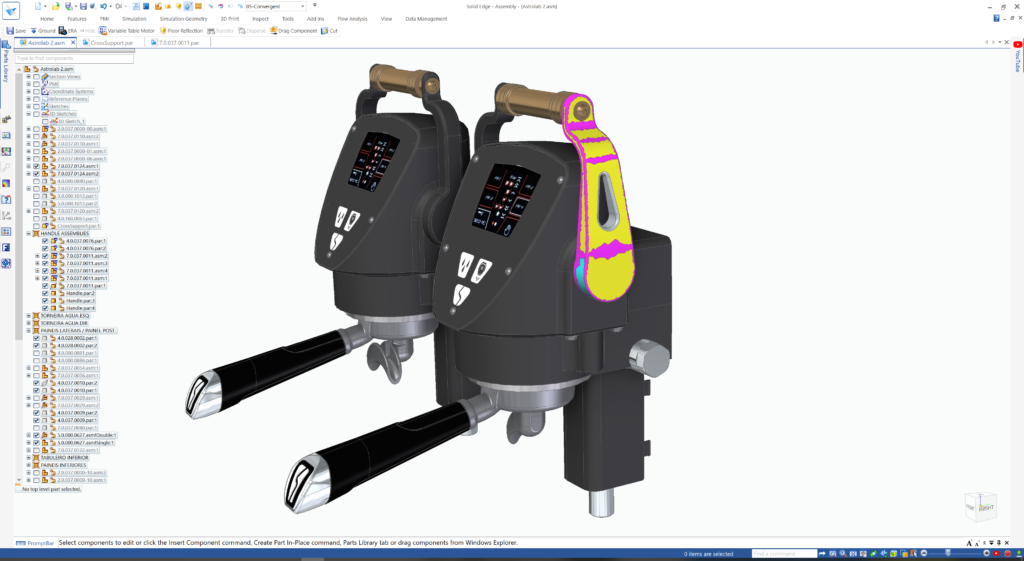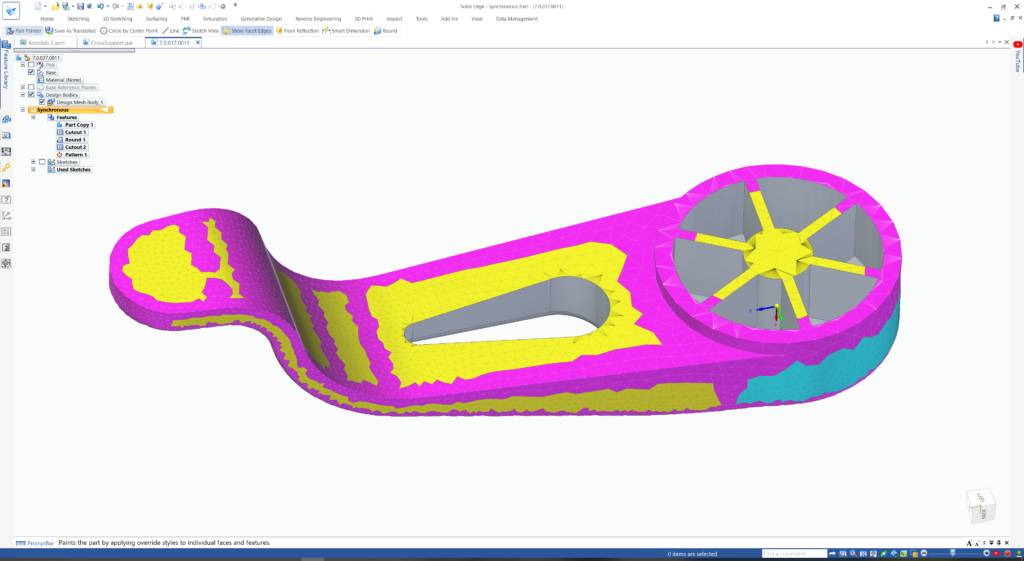What’s New in Solid Edge 2022: Hybrid Modeling

Hybrid modeling made easy
Hybrid modeling is a convergent modeling enhancement that can shrink model development time. So, what is meant by convergent modeling? Convergent refers to using the Siemens-owned underlying Parasolid kernel, technology that is built into Solid Edge. Convergent modeling seamlessly combines traditional b-rep solid models with triangular, or facet, models without requiring time-consuming and error-prone conversions.

Convergent modeling is an important technology because a 3D digital design environment typically incorporates both types of models, as well as scanned models and even generative design data. Scanned and generative bodies are composed entirely of facet models, which were previously incompatible with b-rep modeling tools inherent in 3D CAD systems. Convergent modeling makes facet bodies available for b-rep modeling operations without translation.

Unique hybrid modeling capabilities provided in Solid Edge 2022 allow b-rep and mesh geometries to coexist in the same model for downstream assembly use, speeding workflows and making mesh models even more useful. Removing the need to convert mesh or b-rep geometry in order for them to work together reduces model development time. Solid Edge 2022 supports hybrid models during translation, drawing generation and in assembly modeling.
See the solution in action
Check out the video below to experience the full power of hybrid modeling in Solid Edge 2022.
To learn more about what’s new in this release, visit siemens.com/solidedge2022.



